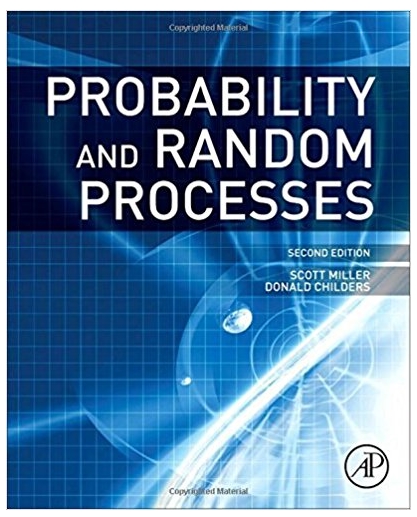Question
Please help me with these exercises below of queue problems. I need the answers by hand and excel (when question requires). Thank you in advance
Please help me with these exercises below of queue problems. I need the answers by hand and excel (when question requires). Thank you in advance
Problems 1-5: On average 160 customers in a 12 hour period arrive at a service station. The average service time is 3,2 minutes. Queue formation is observed. Some of the interesting questions are:
i) how many customers must wait for service?
ii) how long a customer needs to wait?
iii) how long does the server have to wait?
iv) how long are the queues?
v) what is the probability that at least 3 customers are queueing?
vi) what is the probability that the waiting time exceeds 5 minutes?
vii) how efficiently is the server used?
1. First assume that both arrivals and services follow a Poisson process.
a) Express this assumption using the Kendall notation A/B/c/K/P.
b) Answer to as many questions i) - vii) as possible by using appropriate queue formulae. You may finish calculations by hand or use Excel and macros in Optima (Printing queue.xlsx). Recognize the cases where an analytic solution does not exist.
2. Secondly, assume that the service times have a normal distribution with mean value 3,2 min and standard deviation 1,4 min.
a) Express this assumption using the Kendall notation.
b) Answer to as many questions i) - vii) as possible by using appropriate queue formulae. You may finish calculations by hand or use Excel and macros in Optima (Printing queue.xlsx). Recognize the cases where an analytic solution does not exist.
c) Explain which answers and why are different from those obtained in Problem 1.
3. Construct a simulation model for Problem 2 which extends a time period of 100 hours by modifying the Excel model (Exercises.xlsx) found in Optima. Answer to as many questions i) - vii) as possible by running the simulation sufficiently many times. Compare the answers to those obtained in Problem 2.
4. Construct a simulation model for Problem 2 which extends a time period of 1000 hours by using Flexsim software. Answer to as many questions i) - vii) as possible by running the simulation sufficiently many times. Compare the answers to those obtained in Problems 2 and 3.
5. Study a) analytically b) using Excel and/or c) using Flexsim how the answers to questions i) - vii) will change if an identical server is taken into use parallel to the first one? How can you calculate the server idle time and utilization factor when there are two servers? Which figures of merit are in favour of and which against using another server?
6. Customers arrive at a drive-in restaurant so that the maximal rate of arrivals is at 4 minute intervals. The average time from giving the order to payment is 3 minutes. How many parking places should be reserved for cars on the driving lane? How can you minimize the time a customer spends in the system? Can you estimate how many customers do not enter the system because of a long queue? For example, calculate the probability that the waiting takes more than 5 minutes or the probability that there are not enough parking places. Use waiting line formulae or construct and run a simulation model.
7. In a terminal there are 5 workers who share 2 forklift trucks to move around pallets. The need to use a truck repeats on average 6 times an hour and the average driving time is 15 minutes. Study the efficiency of the operation and calculate if it is economically a good idea to acquire a third truck. You can choose the values for working time and cost yourself. Use waiting line formulae or run a simulation model.
8. A terminal worker spends on average half an hour to unload a load. The arrival rate of loads at terminal gates T1 and T2 is on average 5 loads in every working shift of 7,5 hours. The supervisor thinks that the worker can also handle the loads arriving at gate T3 because it has an arrival rate only 2 loads in 7,5 hours. Construct a simulation model and study whether the supervisor is correct. Make suggestions to improve the operation. Assume that the interarrival times have an exponential distribution and the unloading time a normal distribution.
Step by Step Solution
There are 3 Steps involved in it
Step: 1

Get Instant Access to Expert-Tailored Solutions
See step-by-step solutions with expert insights and AI powered tools for academic success
Step: 2

Step: 3

Ace Your Homework with AI
Get the answers you need in no time with our AI-driven, step-by-step assistance
Get Started


